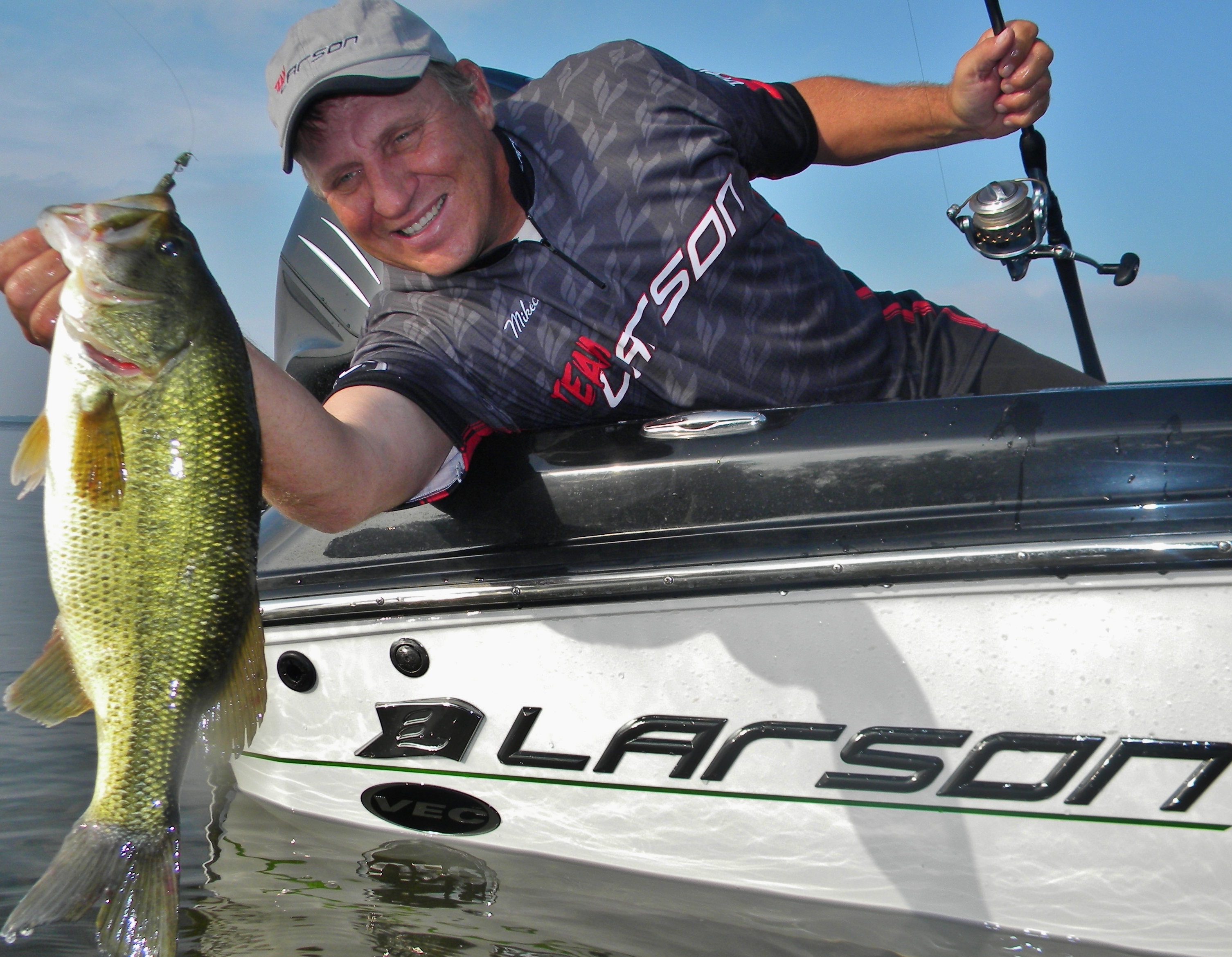
Summer largemouth bass roam deep weedlines in very good numbers during summer’s heat. A great way to find and catch these fish is using a one-two fishing combination that I call “search & destroy.” This method utilizes a crankbait to find the fish, and a jig-worm to really “work over” a school once found.
What we anglers refer to as “deep weedlines” are the outside edges of weeds that start growing on flats, grow down their edges, and eventually stop growing in deeper water as sunlight penetration diminishes. During summer, these weedlines prosper and largemouth bass and other fish call them home.
A great way to quickly find fish on the weedline is to hold the boat out from the weeds and parallel the edge while moving along under the power of a trolling motor. While moving along, I like to cast a deep-diving crankbait at an angle out ahead of the boat, but up to the weeds, and quickly work it back.
This is a great way to locate an active school of bass roaming the weedline. Once found, I will hold the boat stationary and make repeated casts to the fish. Often, several bass can be caught in short order when a school is located.
Several crankbaits will catch fish when used in this fashion. Recently, however, I have had outstanding success throwing the Rattlin’ Hornet 6.5 This bait is designed for long casts, dives deep to get down to bass along deep weedlines, and has an action big largemouth love. The hot perch color pattern is a favorite on lots of lakes I fish, though sexy shad and Tennessee shad have produced fish in good numbers as well.
I start my fishing moving down the weedline using the search method just described. Once a school has been found, and some have been caught, often the action slows. When that happens, I break out a jig-worm combination (“destroy”) in an effort to trigger more bites.
This combination features a light jig in the 1/8-ounce size range tipped with some sort of soft bait worm. Various jig head styles will work for this fishing; I prefer a Slurp! Jig as it has a big bite hook and bait holding collar that works great when rigging with a worm.
Veteran jig-worm anglers use various worm styles that produce bass. The past several years, the do-nothing, stick style worms have been very productive for guide clients and me. These baits catch good numbers of bass, but day in and day out they seem to put bigger bass in the boat than other worm styles.
The soft plastic stick baits in dark worm colors seem to be the best, with the green pumpkin, camo, and June bug patterns being my favorite Dip-Stick colors. As always, the only sure way to find the color the fish prefer on any given day is to experiment.
Moving down the weedline and finding largemouth bass with a preference for eating is one of my favorite summer activities, and “search & destroy” is a productive way to do just that. Using the tips just provided regarding this technique can probably help you find summer weedline success as well!
As always, good luck on the water, and remember to include a youngster in your next outdoor adventure!
Mike Frisch co-hosts the popular Fishing the Midwest TV series and is a veteran western Minnesota fishing guide. Learn more by visiting www.fishingthemidwest.com or by “liking” Fishing the Midwest on Facebook.
By Mike Frisch

